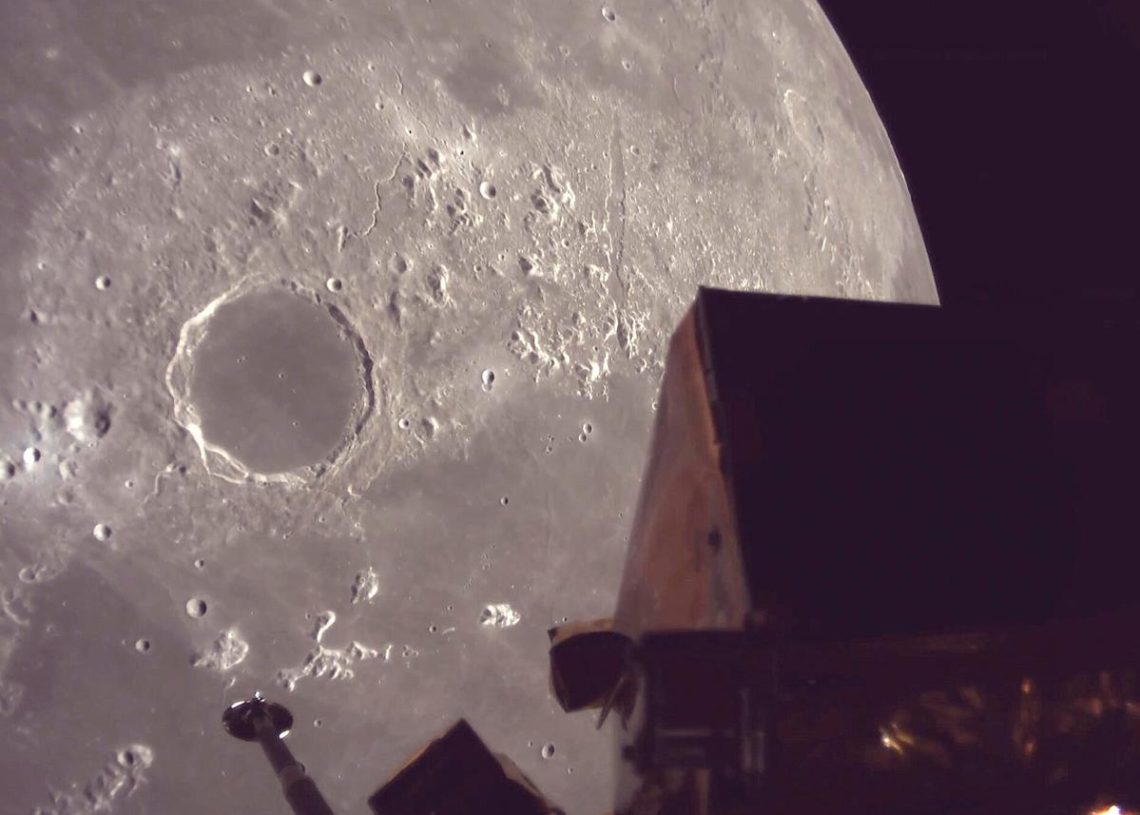Four-and-a-half months after launch atop a Falcon 9 rocket, a privately-built Japanese lander attempted to touch down on the moon Thursday, but telemetry indicated a higher-than-expected descent velocity moments before communications were lost. The data suggested a mission-ending crash landing.
“Based on the currently available data, the Mission Control Center has been able to confirm the following: The laser rangefinder used to measure the distance to the lunar surface experienced delays in obtaining valid measurement values,” ispace, builder of the Resilience lander, said in a statement.
“As a result, the lander was unable to decelerate sufficiently to reach the required speed for the planned lunar landing. Based on these circumstances, it is currently assumed that the lander likely performed a hard landing on the lunar surface.”
After unsuccessful attempts to re-establish communications, flight controllers in Tokyo uplinked commands to reboot the Resilience lander’s flight computer. But there was no response.
“Given that there is currently no prospect of a successful lunar landing, our top priority is to swiftly analyze the telemetry data we have obtained thus far and work diligently to identify the cause,” said ispace founder and CEO Takeshi Hakamada.
“We will strive to restore trust by providing a report of the findings to our shareholders, payload customers, (mission) partners, government officials and all supporters of ispace.”
The landing attempt came two years after ispace’s first lander malfunctioned during the final stages of its descent to the moon, making a similar hard landing. But Hakamada said it was too early to establish any common cause and that engineers needed more time to analyze the telemetry that made it back to Earth.
Carrying cameras, a few science payloads, a tiny rover and even an art project, Resilience fired its thrusters just after 2:10 p.m. EDT to begin the 66-minute descent from a 62-mile-high circular orbit to touchdown near the center of Mare Frigoris — the Sea of Cold — in the moon’s northern hemisphere at 60 degrees north latitude.
All appeared to be going smoothly when, around 3:17 p.m. — the projected landing time — telemetry suddenly ceased. The last data received indicated a higher-than-expected descent velocity and an altitude of 630 feet above the surface.
“At this moment, we have not yet been able to establish communication with Resilience, but ispace engineers in our Mission Control Center are continuing to work to contact the lander,” the company posted on X just after 5 p.m.
“We will share an update with the latest information in a media announcement in the next few hours. Thank you for your patience — please check back with us soon.” Three hours later, officials announced the landing failure during a news briefing.
The primary goals of the mission were to land on the moon and deploy the small micro rover Tenacious. The rover, in turn, carried the art project, a tiny model of a Swedish house, designed by artist Mikael Genberg. The traditionally styled red-and-white house measures just 4.7 inches long, 4 inches high and weighs just 3.5 ounces.
Asked why he took on the project, which required years of planning, fundraising and engineering, Genberg said “we have done as human beings things from time to time that (do not) seemingly have a purpose beyond just being creative.”
“The Eiffel Tower, for instance, I mean it’s a stupid thing to build,” he said. “Today, it has a purpose as maybe the most important thing to make Paris the most visited city in the world.”
While the “moonhouse” could survive for thousands if not millions of years in the airless environment of the moon, its custom paint was expected to fade in the sun’s harsh radiation, and lunar dust will slowly coat its surface. Genberg joked that he would happily await an invitation to repaint it.
Ispace is one of a handful of companies attempting to provide non-government transportation services to the moon for a variety of payloads ranging from science instruments to technology demonstrations.
But as it turns out, getting low-cost spacecraft to the moon’s surface is extremely difficult.
Ispace tried and failed in 2023 when its first lander ran out of propellant nearing the surface, dropping to a “hard” crash landing. Pittsburgh-based Astrobotic Technology launched its Peregrine lander in January 2024, but the spacecraft suffered a propulsion system leak and never made it to the moon.
Houston-based Intuitive Machines successfully put two landers down on the lunar surface in 2024, and again earlier this year, but both spacecraft tipped over on touchdown. While each one survived its landing, neither was able to accomplish all of its pre-flight objectives.
Before Thursday, only Firefly Aerospace had successfully touched down and carried out its mission, landing the Blue Ghost spacecraft on March 2, 53 years after the final Apollo mission.
Resilience and Blue Ghost were launched atop a single SpaceX Falcon 9 rocket on Jan. 15. The Blue Ghost lander took a direct route to the moon and carried out a successful touchdown, operating for a full two-week lunar “day.”
Resilience followed a longer, low-energy trajectory that carried it well past its target, using the moon’s gravity to bring it back to an initially elliptical orbit and finally, using its thrusters, to the 62-mile circular orbit that set the stage for descent.
Musk alleges Trump’s name appeared in Epstein files as feud escalates
What to know about President Trump’s travel ban on nationals from 12 countries
Trump says he’s disappointed by Musk criticism of budget bill, Musk says he got Trump elected
The post Japanese probe’s second straight attempt at moon landing a failure appeared first on CBS News.




